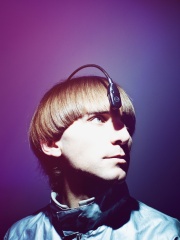


The Most Famous
ARTISTS from Spain
Top 3
The following people are considered by Pantheon to be the most legendary Spanish Artists of all time. This list of famous Spanish Artists is sorted by HPI (Historical Popularity Index), a metric that aggregates information on a biography's online popularity.

1. Jusepe de Ribera (1591 - 1652)
With an HPI of 77.31, Jusepe de Ribera is the most famous Spanish Artist. His biography has been translated into 66 different languages on wikipedia.
Jusepe de Ribera (Valencian: [josep ðe riˈβeɾa]; baptised 17 February 1591 – 3 November 1652) was a Spanish painter and printmaker. Ribera, Francisco de Zurbarán, Bartolomé Esteban Murillo, and the singular Diego Velázquez, are regarded as the major artists of Spanish Baroque painting. Referring to a series of Ribera exhibitions held in the late 20th century, Philippe de Montebello wrote "If Ribera's status as the undisputed protagonist of Neapolitan painting had ever been in doubt, it was no longer. Indeed, to many it seemed that Ribera emerged from these exhibitions as not simply the greatest Neapolitan artist of his age but one of the outstanding European masters of the seventeenth century." Jusepe de Ribera has also been referred to as José de Ribera (usual in Spanish and French), Josep de Ribera (in Catalan), and was called Lo Spagnoletto (Italian for "the Little Spaniard") by his contemporaries and early historians. Ribera created history paintings, including traditional Biblical subjects and episodes from Greek mythology. He is perhaps best known for his numerous views of martyrdom, which at times are brutal scenes depicting bound saints and satyrs as they are flayed or crucified in agony. Less familiar are his occasional, but accomplished portraits, still lifes and landscapes. Nearly half of his surviving work consist of half length portraits of workers and beggars, often older individuals in ragged clothes, posing as various philosophers, saints, apostles and allegorical figures. Ribera's paintings, particularly his early work, are characterized by stark realism using a chiaroscuro or tenebrist style. His later work embraced a greater use of color, softer light, and more complex compositions, although he never entirely abandoned his Caravaggisti leanings. Very little is known about the first 20 years of his life and there are many gaps concerning his later life and career. He was baptized on 17 February 1591, in Játiva, Spain, his father identified as a shoemaker. He is not recorded again until 1611, when records show he was paid for a painting (now lost) for a church in Parma, Italy. Documents show he was a member of the Accademia di San Luca in Rome by October 1613 and living in a house in the Via Margutta in 1615–16, at that time known as "the foreigner's quarter", apparently living a bohemian life with his brothers and other artists. Anecdotal accounts written at the time indicate he quickly earned a reputation as an outstanding painter after arriving in Rome and was earning great profits, but also noted his laziness and extravagant spending. Ribera moved to Naples in late 1616, under Spanish rule at that time, and in November married Caterina Azzolino, the daughter of Sicilian painter Giovanni Bernardino Azzolini. There he remained for the rest of his life, setting up a workshop with many pupils, securing commissions, and establishing an international reputation. In 1626 he received the Cross of the Order of Christ from Pope Urban VIII. His health began to deteriorate in 1643 and his productivity declined from that time on, and by 1649 he was experiencing financial hardships as well. However, when his health permitted, he continued to produce several acclaimed paintings into the last year of his life.

2. Neil Harbisson (b. 1984)
With an HPI of 47.42, Neil Harbisson is the 2nd most famous Spanish Artist. His biography has been translated into 20 different languages.
Neil Harbisson (27 July 1982) is a Catalan-raised British-Irish-American cyborg artist and cyborg rights advocate who has been widely portrayed as the world's first cyborg. International attention grew after he received permission to appear in his UK passport photo with an antenna implanted in his skull, a device he considers a new sensory organ. His artistic and activist work centres on expanded perception and the rights of people with technologically extended bodies. Since 2004, Harbisson has used his antenna to perceive colour—including infrared and ultraviolet—through audible vibrations transmitted via bone conduction. The device can also receive images, colour data, and signals from external sources, including the internet. In 2010, he co-founded the Cyborg Foundation, an organisation dedicated to defending cyborg rights, supporting people seeking to extend their senses, and promoting cyborg art. In 2017, he co-founded the Transpecies Society, which advocates for self-design and recognition of individuals with non-human identities or sensory systems.

3. Abel Azcona (b. 1988)
With an HPI of 42.73, Abel Azcona is the 3rd most famous Spanish Artist. His biography has been translated into 30 different languages.
Abel Azcona Marcos (born 1 April 1988) is a Spanish artist, specializing in performance art. His work includes installations, sculptures, and video art. He is known as the "enfant terrible" of Spanish contemporary art. His first works dealt with personal identity, violence and the limits of pain; his later works are of a more critical, political and social nature. Azcona's works have been exhibited at the Venetian Arsenal, the Contemporary Art Center in Málaga, the Bogotá Museum of Modern Art, the Houston Art League, the Leslie-Lohman Museum of Art in New York and the Círculo de Bellas Artes in Madrid. His work has also been exhibited at the Asian Art Biennale in Dhaka and Taipei, the Lyon Biennale, the Miami International Performance Festival and the Bangladesh Live Art Biennale. The Bogotá Museum of Contemporary Art dedicated a retrospective exhibition to him in 2014.
People
Pantheon has 3 people classified as Spanish artists born between 1591 and 1988. Of these 3, 2 (66.67%) of them are still alive today. The most famous living Spanish artists include Neil Harbisson, and Abel Azcona. The most famous deceased Spanish artists include Jusepe de Ribera.

